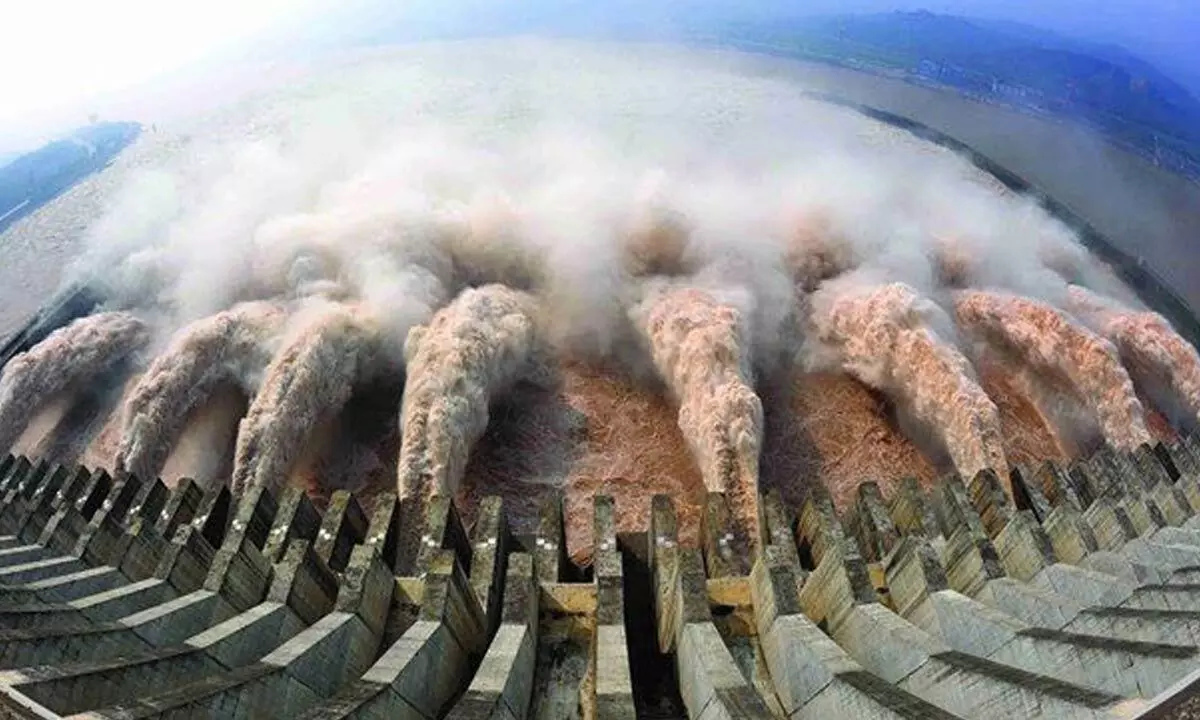Dragon’s Himalayan threat to India

- The Modi government says it is keeping a watch on the project. But, is it enough?
- However, US Institute of Peace dismisses the worrying WWF report as imaginary
Noted geopolitical expert Brahma Chellany in a recent piece for Nikkei Asia, said, “China can’t just keep building the world’s biggest dam in secret.” Yes, China is building its biggest dam on Yarlung-Tsangpo river on its part of Line of Actual Control (LAC) in Tibet. This river is known as Brahmaputra in India.
Of course, the very reason why China has occupied Tibet is because of its resources including water, zinc and other rare earth elements (REEs). The Chinese plan is quite simple in fact: It seeks to control the supply of high-tech devices in which REEs are necessary components of more than 200 products across a wide range of applications, especially high-tech consumer products, such as cellular telephones, computer hard drives, electric and hybrid vehicles, and flat-screen monitors and televisions.
Significant defense applications include electronic displays, guidance systems, lasers, and radar and sonar systems. Although the amount of REE used in a product may not be a significant part of that product by weight, value, or volume, REE can be necessary for the device to function.
China has done enough surveys in the Himalayan region to locate the quantities of Rare Earth Elements available and, hence, has adopted a salami slicing plan to nibble away at our territories. Unfortunately, we neither have the commitment nor the courage to beat them back in the game.
Apart from this factor, it is the Himalayan water resource that lures China to trouble its neighbours despite the fact that the Himalayan waters offer a lifeline to several countries like Afghanistan, Bangladesh, Bhutan, China, India, Pakistan, Myanmar and Nepal. More than two billion people of these countries are dependent on these water resources.
The Chinese move to regulate the waters of Brahmaputra will have a telling effect on several of these countries including India.
China’s mega project, with a planned capacity of 60 gigawatts, close to its heavily militarized frontier with India, will supersede both in size and capacity with its own ‘Three Gorges Dam,’ currently the world’s largest hydroelectric facility experts have cautioned.
Though we find an occasional mention of these plans, China guards its project details with utmost secrecy. Still, with modern technology it should not be a problem for the Indian government to at least find out what it is doing instead of waiting for it to declare its intent after the completion of such a huge dam.
Origins of Yarlung-Tsangpo are in the Angsi Glacier near Mount Kailash. This proceeds to become a 3,969-kilometer transboundary river converting it into a major river system that has contrasting hydro-climatic zones. It flows through distinct regions, originating in the Tibet Autonomous Region (TAR), the Yarlung Zangbo flows into India as the Brahmaputra and finally forms the delta in Bangladesh.
Where is China building its giga-project? After its 1,100-kilometer eastward course through which it receives several tributaries, the river turns suddenly to the northeast. It cuts its course through a succession of great narrow gorges between mountainous massifs at the eastern end of the Himalayas it turns southward. Here it shoots across the China-India Line of Actual Control (LAC) with canyon walls that extend upward for 5,000 meters or more on either side forming a deep gorge (the “Yarlung Tsangpo Grand Canyon”) as it enters India.
This has been identified as the best spot for the dam to be built. China claims this to be just a hydro power generation project and seeks to assure countries like India that it won’t impound water. Known for their deception, the Chinese cannot be trusted and should not be.
The Chinese may not be in a position to divert Brahmaputra waters that affect the lower riparian countries conditions but it can certainly control the flow of the waters. The Chinese state-run tabloids have been proclaiming “China will build a hydropower project on the Yarlung-Tsangpo River, one of the major waters in Asia that also passes through India and Bangladesh.”
Chairman of the Power Construction Corp of China, or Powerchina, had announced, “There is no parallel in history. He had announced that the dam could provide 300 billion kilowatt hours (kWh) of clean, renewable, and zero-carbon electricity annually, which would help Beijing meet its clean energy goals. These reports continued to talk of only the power production aspect of it.
But no one ever talks of China using the river to mitigate its own water scarcity in some parts. So what would be the ecological impact on India and other countries like Bangladesh? Experts harp on the point that China is engaged in the greatest water grab in history. It is not just building one such mega project but a string of multiple dams on all major rivers running off the Tibetan plateau. All its small dams are leading to the culmination of the biggest dam ever.
Any talk of cooperation in this regard is useless as China won’t be mindful of our concerns. There is an agreement - an MoU - precisely between China and India that information must be shared with the downstream country on the flow rates during the monsoon season. After the Doklam standoff China has completely stopped sharing any communication in this regard.
Climate change has already worsened the hydrological situation throughout and the Himalayan region is not stranger to it. The World Wildlife Fund has pointed out in one of its reports how sensitive the Himalayas are to these changes and warned of the issues like food water and energy security that might arise soon.
“The Himalayan glaciers are the water towers of Asia, and the source of many of the world’s great rivers: The Yangtze, the Ganges, the Indus and the Mekong. Over a billion people depend directly on the Himalayas for their survival, with over 500 million people in South Asia, and another 450 million in China completely reliant on the health of this fragile mountain landscape”, the report said.
However, the United States Institute of Peace dismisses the problem as imaginary based on per capita availability of water. “A simplified version of the water wars argument is that per capita water availability will drop as populations grow and water supplies remain constant. At the same time, economic growth will multiply demand as effective supplies are reduced with quality declines. Climate change will only worsen the situation. For internationally shared rivers, conflict over the vital resource will occur when some tipping point is reached, particularly if tensions over other issues are high and there is no history of institutionalizing cooperation over water through treaties or other mechanisms”.
This is where the problem arises. It could be true that the catchment area of Brahmaputra could as well be in the downstream and in the Tibetan region, still China could impact its flow by impounding the water. After all, it is no friend of India and in addition has never displayed any concern for the peoples of any country – including its own.
Again what would be the impact of this biggest dam on the seismic activity of the fragile Himalayan region? We already know that under the impact of various smaller hydroelectric projects in the Himalayan region, several Indian States located here are facing problems. The Indian government says it is keeping a watch on the project. Is it enough? The Opposition has been attacking the government for its silence over China-related developments for a long time. Shall we take it for granted that nothing would be done in seeking accountability from China in this regard too?















